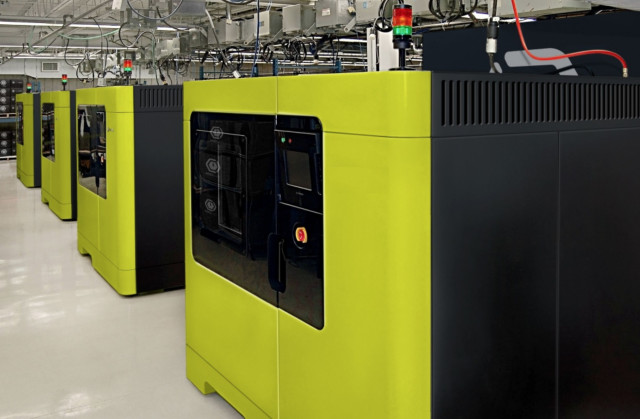
The industrial revolution paved the way for massive technological progress, but left in its wake an innumerable list of problems that run the gamut from ecological to social woes.
At the heart of these issues may be the centralized factory, responsible for mass manufacturing the countless products used by civilization on a daily basis. A shift in this model of production is beginning to occur, however, thanks to the increased adoption of 3D printing by manufacturers large and small, resulting in a new model known as distributed manufacturing.
The Physical Inventory Problem
Maintaining an inventory is necessary for manufacturers and resellers of goods to ensure that demand can be met. That inventory, however, is actually in surplus of what is immediately needed, resulting not only in a cost to all involved, but also in the material waste associated with unsold inventory. Ultimately, a manufacturer spends money on producing, shipping and storing items that may never get bought in the first place, and the environment pays the cost of unused goods that may end up in a landfill, in addition to the energy and consequential pollution created during the manufacturing process.
3D printing opens up a new alternative to manufacturers that does away with this inventory problem and introduces a completely unique production paradigm only possible in the 21st century. Rather than create a physical inventory, manufacturers can either digitize legacy items through 3D scanning or, when developing new goods, make 3D-printable, virtual versions. Then, when these items are requested by a customer, they can be pulled from a digital inventory and be 3D printed on demand. With 3D printing centers located throughout the world, this can be performed at a hub that is as close to the end-use location as possible.
Of course, this model of distributed manufacturing does not currently work for all goods that make up the fabric of daily life. At the moment, 3D printing is more or less isolated to the fabrication of individual parts that are incorporated or assembled into a larger design, not the production of functioning electromechanical objects. In other words, it’s possible to 3D print the shell for a smartphone, but there is not yet a way to 3D print the complete smartphone itself. While those technologies are, in fact, being developed—LITE-ON in Taiwan has begun 3D printing electronic circuits directly onto mobile phones as a part of its mass manufacturing process—there is no need to wait around for 3D printing functional goods to be possible in order to begin implementing a distributed manufacturing model. Spare parts and low-volume components may be the ideal entry point for original equipment manufacturers (OEMs) to take advantage of the benefits of 3D printing.
Low-Volume Parts
Speaking with Rick Smith, cofounder of distributed manufacturing business Fast Radius, I learned that a number of OEMs are already looking to address their physical inventory woes with the advantages of virtual inventories.
“On average, the rule of thumb for the cost of holding physical inventory is about 25 percent the cost of the part per year,” he explained. “There is a significant cost in terms of cost of capital, warehousing space, security and damage. The other major problem with physical inventory is that you’ve got to produce in large volumes to get the unit costs low. This works great when you’re producing iPhones and you know you’re going to sell 10 million of them. But, when all of a sudden you’ve got an essential part and you know you’re only going to need 15 of them per year—maybe it’s a critical part to a machine in a manufacturing operation that doesn’t break very often, but is extremely important when it does break—then it doesn’t make sense to go through the setup and all of the costs related to doing a larger-scale production.”
Smith’s solution is to produce those parts when they’re needed through 3D printing. The investment costs of an industrial 3D printer can be quite high, with metal additive manufacturing (AM) systems easily reaching prices of half a million dollars or more. Smith pointed out that, in many cases, companies that adopt AM systems for in-house use often have those machines set up for specific use-cases with specific materials. For that reason, Fast Radius was launched as a complete 3D printing service provider. Instead of purchasing an industrial system for in-house use, OEMs can simply turn to a firm like Fast Radius to have parts printed on-demand.
“Companies are very frustrated with the inefficiencies of holding physical inventory,” Smith said. “They’re aggressively looking for ways to reduce physical inventory, and you can only make the current system so efficient. So, they’re identifying very- low-throughput, low-velocity parts—parts that don’t ship very often—and rather than produce those parts in large batches, they’re now shifting toward on-demand production.”
Read more at ENGINEERING.com

